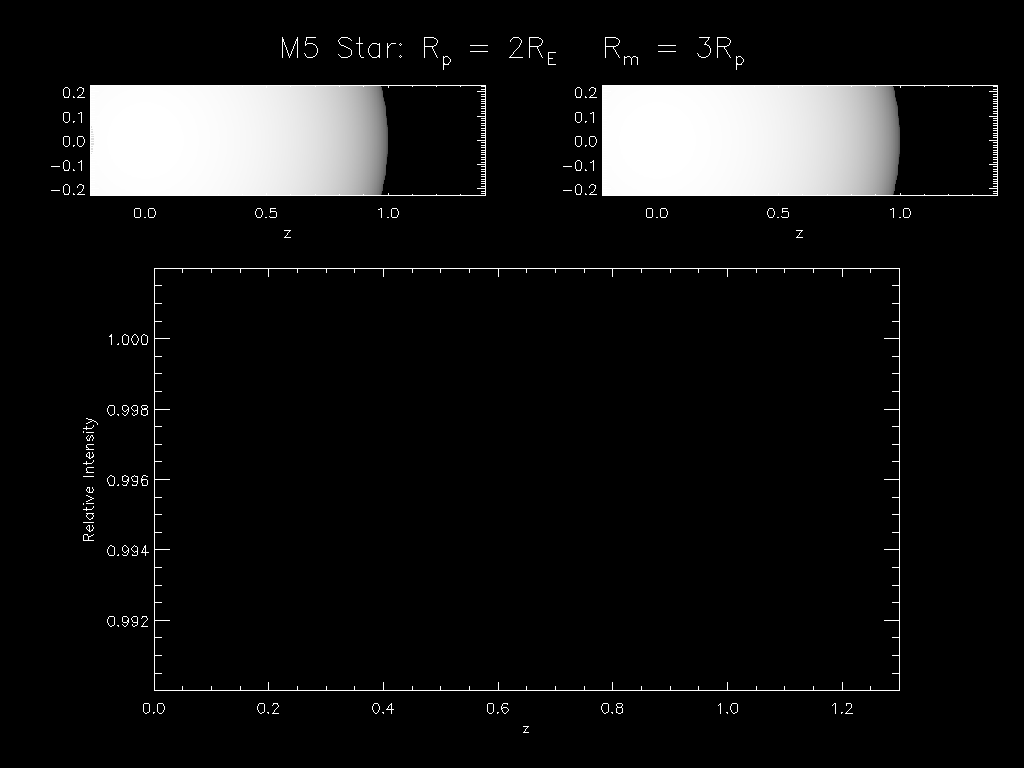
The detailed shape of a transit light curve depends on the type of star, the planet's size, and its orbital period, size, and inclination. By carefully analyzing the transit light curve data, we can figure out how big a planet is, how far it is from its star, and whether or not it might be habitable - capable of sustaining life.
Dr. S., Dr. Korpela, and a UW-L undergraduate student have simulated the effects of simple fleets of mirrors, predicting their impact on the transit light curves. We assumed the mirrors would illuminate the dark side to the same level as the day side.
In the animated GIF movie below, the left panel shows a transiting planet surrounded by a simple fleet of mirrors, resulting in the solid light curve in the bottom graph. The right panel is for a single planet without mirrors that would produce a transit of similar depth, producing the dashed curve.

This is also available as an AVI movie , Quicktime movie, or MP4 movie .
Unfortunately, the effects of such a fleet of mirrors are too small to be observable with Kepler data, but future telescopes will be more sensitive. At that time, students may have the opportunity to search for these effects in the transit light curves of exoplanets.
Last updated August, 2014